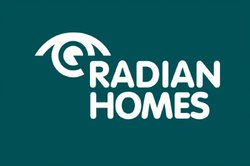Hi vis clothing is vital for keeping workers safe where low-visibility is a concern – this includes working on construction sites, or near traffic, forklifts, and other vehicles.
Hi vis garments are currently controlled by legislation and should be certified to the EN ISO 20471 standard. Compliance with this standard can be impacted by custom branding if not managed correctly – keep reading to learn how you can promote your company with corporate branded hi vis while staying compliant with UK safety standards.
What is Hi Vis?
Hi vis workwear was introduced in the UK in the 1960s, being used to support railway worker safety in Glasgow in 1964. It was soon recognised as law in the 1974 Health and Safety at Work Act and developed in the 1992 Personal Protective Equipment (PPE) at Work Regulations. This made PPE and Hi Vis workwear mandatory in various working applications.
The purpose of hi vis is to make wearers clearly, and immediately, visible against whatever background environment they’re in, even in low-light conditions. This ensures that everyone can see each other while working on site, reducing the risk of accidents, especially where vehicles are in use.
Hi vis clothing usually comprises of these three main components:
Fluorescent Fabric
This is designed to increase wearer visibility in daylight but can also boost visibility in low-light conditions. The fluorescent colours used are:
- Yellow
- Orange
- Red (railway workers)
These colours are unlikely to blend with the wearer’s surroundings, so can act as a warning by quickly catching the eyes of others. Any other colour is not compliant with the standard, so be mindful of this when selecting your organisation’s branded hi vis workwear.
Reflective Strips
These reflective strips (or tape) are ‘retroreflectors’, meaning they reflect light back in the direction of the source. Most commonly, retro-reflective strips are manufactured using thousands of tiny, highly refractive glass beads that bounce light back to the source.
Contrast Materials
Contrast fabric is often added to areas of the garment where dirt and debris is likely to build up, i.e., shoulders, sleeve ends, pockets, ankles, and knees. This reduces the spread of dirt onto the fluorescent fabric, keeping the garment compliant with hi vis safety standards. To avoid impacting the fluorescent area, you could opt for placing your logo on the contrast material when creating custom branded hi vis.
What is EN ISO 20471?
EN ISO 20471:2013 is a standard set to ensure the safety of hi visibility clothing in relation to the components mentioned above. The standard refers to performance requirements for fluorescent colour use and retroreflection, in addition to minimum areas and placement of the materials used.
There are different Hi Vis Classes within the standard that determine the minimum requirements of fluorescent material and reflective tape used on each hi vis garment. You can read more about these classes later in the article.
Compliance with EN ISO 20471:2013 can only be achieved if the hi vis garment is worn correctly. A pair of hi vis trousers may not be compliant if they’re tucked into boots, or covered in mud, as this reduces the surface area of the fluorescent material. The same rule applies to wearing any clothing that may obscure the fluorescent material, for example wearing a regular (non hi vis) jacket over a hi vis vest, as well as obscuring the fluorescent properties with a logo. You can read more about custom branded hi vis in relation to compliance below. The ability to adjust garments will depend on the garment itself (i.e. vest or coverall), as well as its Hi Vis Class.
What is the Difference Between EN ISO 20417 and EN471?
In 2013, improvements were made to the EN471 standard to make a clearer distinction between various risk scenarios. Hi vis users can apply their own context to determine the protection level (class) they require in their situation.
This means the responsibility is on the employer and wearer to ensure they are remaining compliant, rather than just the hi vis clothing (as was the case in EN471). To make this easier to follow, sections of the body have been defined as:
- Torso only. For example, gilet, vest, polo/t-shirt.
- Torso and arms. For example, long sleeve jacket/coat; long sleeve polo/t-shirt.
- For example, full length trousers or over-trousers.
- Torso and legs. For example, full length trousers with a short sleeve t-shirt.
- Torso, arms, and legs. For example, coveralls; full length trousers with long sleeve jacket.
Class 3 compliance also became stricter with the introduction of EN ISO 20417, stating that hi vis fluorescent fabric must cover either torso and arms or torso and legs, with reflective strips constantly visible. Where a sleeve obscures a reflective strip, the sleeve must also have a reflective strip.
What are the Hi Vis Classes?
As previously mentioned, there are three Hi Vis Classes within EN ISO 20417. You’ll find the garment’s class on its label, for example, this is the icon for Class 2:
The class you select for your hi vis workwear should depend on employee working conditions. Therefore, it’s best to start with a risk assessment to determine those working conditions.
Classification is based on the surface area of fluorescent and reflective material, as outlined in the table below.
|
Class 1 |
Class 2 |
Class 3 |
|
|
Fluorescent Material |
0.14 m2 |
0.50 m2 |
0.80 m2 |
|
Reflective Material |
0.10 m2 |
0.13 m2 |
0.20 m2 |
How Can Custom Branded Hi Vis Affect Compliance?
Adding your organisation’s logo to hi vis is a great way to promote your business, as well as distinguishing your employees from other firms while on site. It’s important, however, to consider the EN ISO 20471 standard when opting for branded hi vis clothing.
As your custom branding will be covering the fluorescent material, the logo area will be deducted from the surface area calculation. This may, therefore, impact the Hi Vis Class the garment falls into. You should discuss this with your supplier to verify that you’re still meeting the necessary safety requirements to ensure your staff aren’t wearing non-compliant hi vis clothing.
If you’re unable to add your company logo to the fluorescent area without impacting the garment’s class, you could consider adding branding to the contrast material if possible. This may be difficult, however, due to the placement of contrast materials not being optimal areas for branding.
Speak to your PPE and safety workwear supplier to discuss custom branded hi vis in accordance with safety standards. You can read more about our workwear branding here.
When Should Hi Vis Be Replaced?
You should aim to replace your hi vis clothing every 8-12 months, but ultimately it should be replaced when it’s no longer adhering to the EN ISO 20471 standard – that is, when it stops performing to its certified class.
This could be due to over washing – an average hi vis garment loses compliance after 25 washes, as the reflective glass beads lose effectiveness, and the fluorescent fabric becomes faded. It’s best to check the garment care instructions, but it will always have a limited number of washes while remaining compliant. That doesn’t mean you shouldn’t wash your high vis, however, as soiled garments can also lead to non-compliance.
For more information on PPE compliance or PWS’ uniform branding service (including branded hi vis), contact a member of our team or click on the links below.




